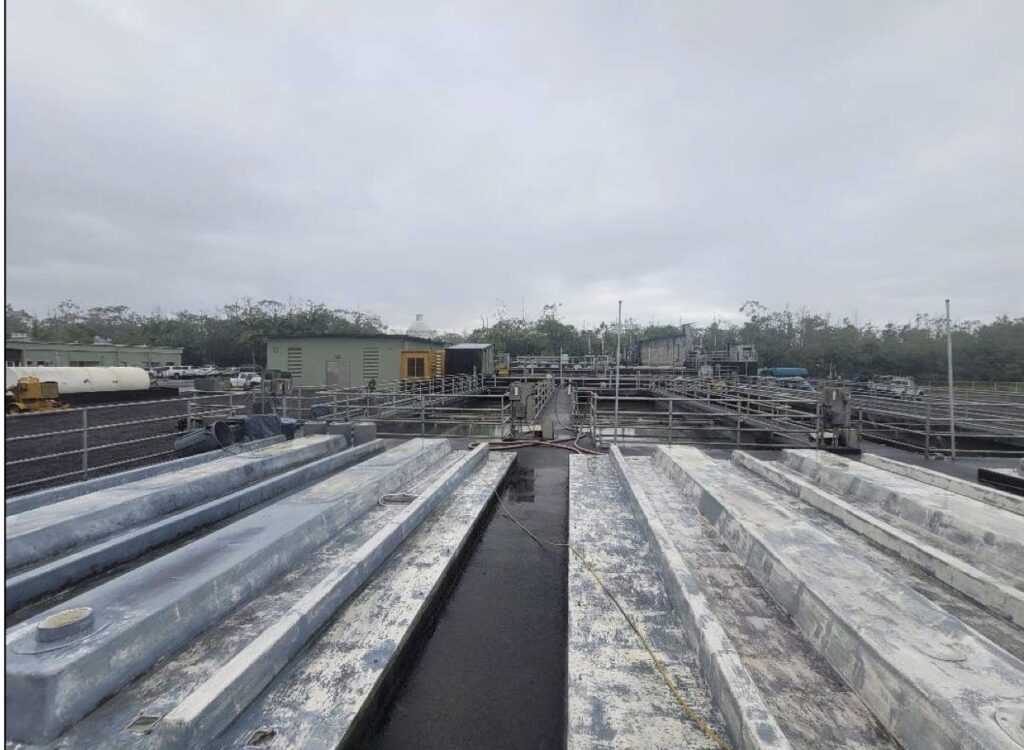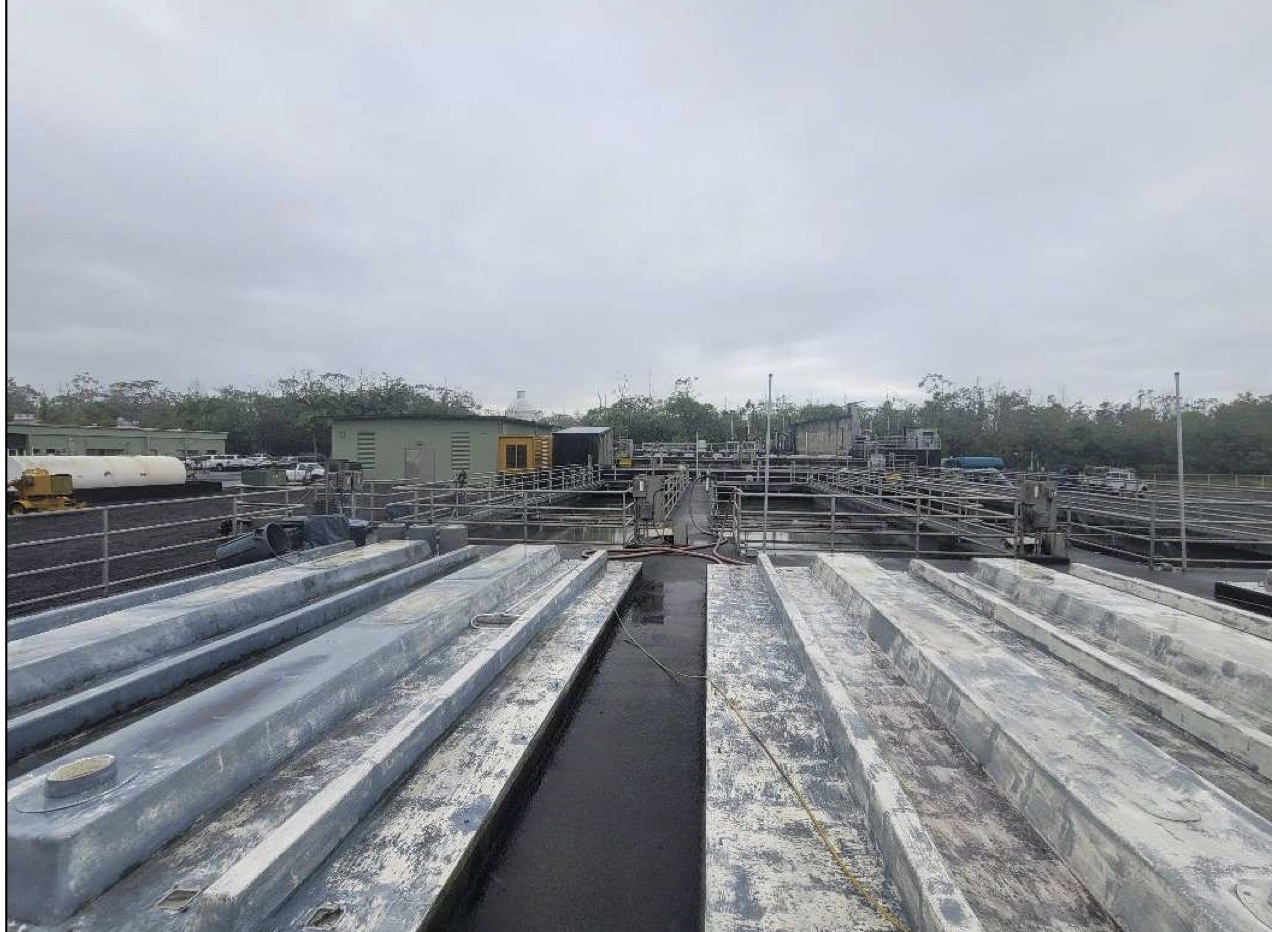The Hawaiʻi County administration and the Environmental Protection Agency have agreed on a consent order that is intended to address the many serious operational issues at three of the county’s wastewater plants on the windward side of the Big Island. The order, approved by the County Council, includes a long and appalling list of permit violations at plants in Hilo, Papaʻikou, and Pepeʻekeo, going back a decade. Almost all the violations are attributed to broken or inoperable equipment, overdue or inadequate maintenance, or poor operations.
Cost of the capital improvements required under the agreement is around $650 million over the next 10 years, county finance director Deanna Sako told the County Council’s Government Operations and External Affairs Committee. The committee recommended approval of the agreement to the full council, which was to consider it at its first meeting in March.
Some highlights from the horror hit list:
- At the Papaʻikou plant, which serves about 3,500 residents of Papaʻikou and Paukaʻa, the equipment that is supposed to remove liquids from sludge has been inoperable since at least 2016. “As a result, [the county] hauls the sludge solids to the Hilo WWTP for processing,” the order states.
- In December 2018, at the Pepeʻekeo plant, a pump failure resulted in approximately 66,000 gallons of sewage that had not been disinfected flowing into coastal waters.
- At the Hilo plant, the floating roof of one of the two sludge digester tanks is stuck, preventing the roof from operating properly and preventing maintenance of the digester.
EPA inspectors “have identified potential health and safety concerns due to failure to properly operate and maintain equipment,” the order states. The health concerns are not just to the public who may be exposed to the spills, but also – and perhaps especially – to the workers.
In fact, the whole sewage collection system is bad shape. The EPA inspectors found that the county “does not have a program in place to systematically repair, rehabilitate, or replace its aging force mains prior to failure. Based on age, many force mains appear to be reaching their end of life and failure may result in significant spill volumes. … A review of sewage spills from the sewer collection systems since 2016 indicates that large spills have occurred primarily due to debris blockage, overflows at pump stations (especially during large storm events), ruptures in force mains, and corrosions. From 2017 to December 2022, nine such spills of more than 1,000 gallons of untreated sewage occurred, including one spill of nearly 70,000 gallons in Papaʻikou (due to a blocked sewer), 400,000 gallons of sewage spilled, again at Papaʻikou (caused by heavy rain), a 41,000-gallon spill from a manhole at Waianuenue and Laimana streets near the Hilo High, Intermediate, and Elementary schools (caused by blockage in the sewer line), and around 28,000 gallons spilled from the sewer line along Banyan drive, in the heart of Hilo’s hotel district.”

The county’s director of environmental management, Ramsi Mansour, answered council members’ questions at the February 20 hearing. He informed the council that already, by the time the agreement is signed, “some projects are almost 60, 70 percent complete.”
“We’ve introduced project management scheduling,” he said, with the complete 1,000-page schedule detailing hundreds of different milestones to achieve.
Council chair Heather Kimball asked corporation counsel Elizabeth Strance to explain the legal context of the agreement.
“The process for developing this AOC [Administrative Order on Consent] took months, if not over a year. The discussions started very early in this administration. There had been a number of violations of various federal laws, so the county was faced with potential lawsuits being filed” by the Environmental Protection Agency.
“There’s good and bad to the agreement,” she continued. “The EPA is going to work with the county to assure compliance rather sue. … It’s within the [EPA’s] administrative enforcement branch, so it’s not a lawsuit, but it could lead to a lawsuit if the county doesn’t follow guidelines. …
“This is not a one-and-done kind of agreement. It’s going to involve a very concerted effort and commitment of resources from the county through 2035, so this is not an insignificant commitment on the part of the county. If the county did nothing, we would probably be in a federal lawsuit right now.”
County finance director Deanna Sako addressed council members’ questions about how the county would be financing these improvements.
“Many of you may remember that we’ve been coming in for about $100 million in wastewater bond authorizations every nine to twelve months,” she said. “We’ve been focused first on the Hilo wastewater treatment plant, which is the first major milestone we’re going to reach in terms of construction.”
While the bond authorizations need to be in place, she explained, the county won’t be drawing down on that until the money is needed to pay for specific expenses.
Mansour added that the EPA has said it will assist the county in identifying sources of financing.
The AOC is just one aspect of the county’s efforts to address wastewater issues throughout the county. The Department of Environmental Management has retained a consultant to help it prepare a full integrated wastewater management plan, which is to address not only the issues identified in the AOC, but also how to drive down the number of cesspools, especially along the Kona Coast.
In addition to working with the EPA, the county also is in settlement talks with Earthjustice, representing a group that has sued the county in federal court over its operation of the Kealakehe wastewater treatment plant. The group, Hui Mālama Honokōhau, has sued to force the county to obtain a National Pollutant Discharge Elimination System permit for the plant, which drains effluent indirectly into Honokōhau Harbor.
Last month, the first settlement talks were held. Another session is scheduled for March 11. If talks are unproductive, a non-jury trial is set for November 5.
— Patricia Tummons


James Keim
$650 million in costs in addition to health hazards and many possible ongoing legal problems. Sad facts for the Big Island, but important in understanding the long term effects of permit and rule violations.